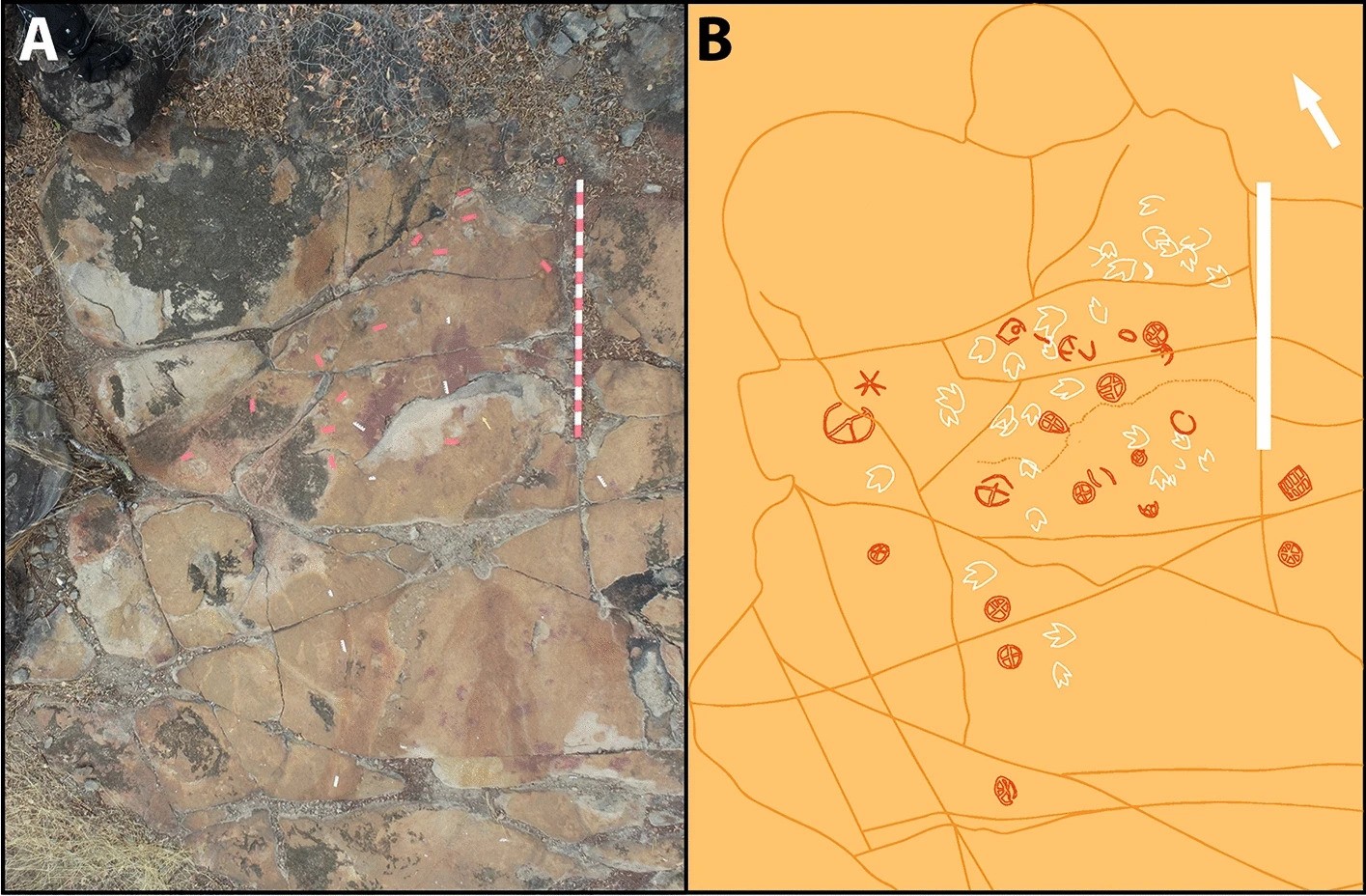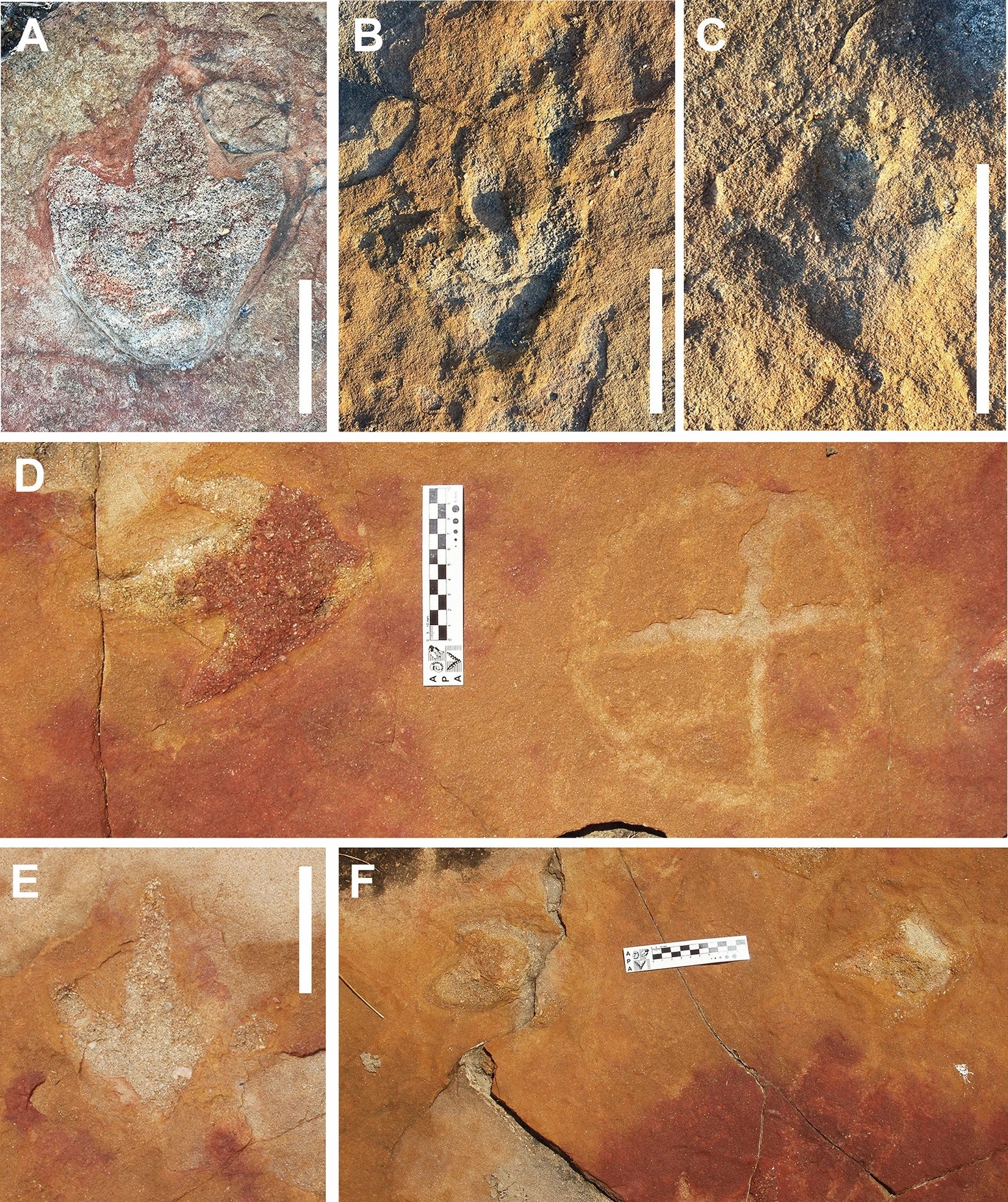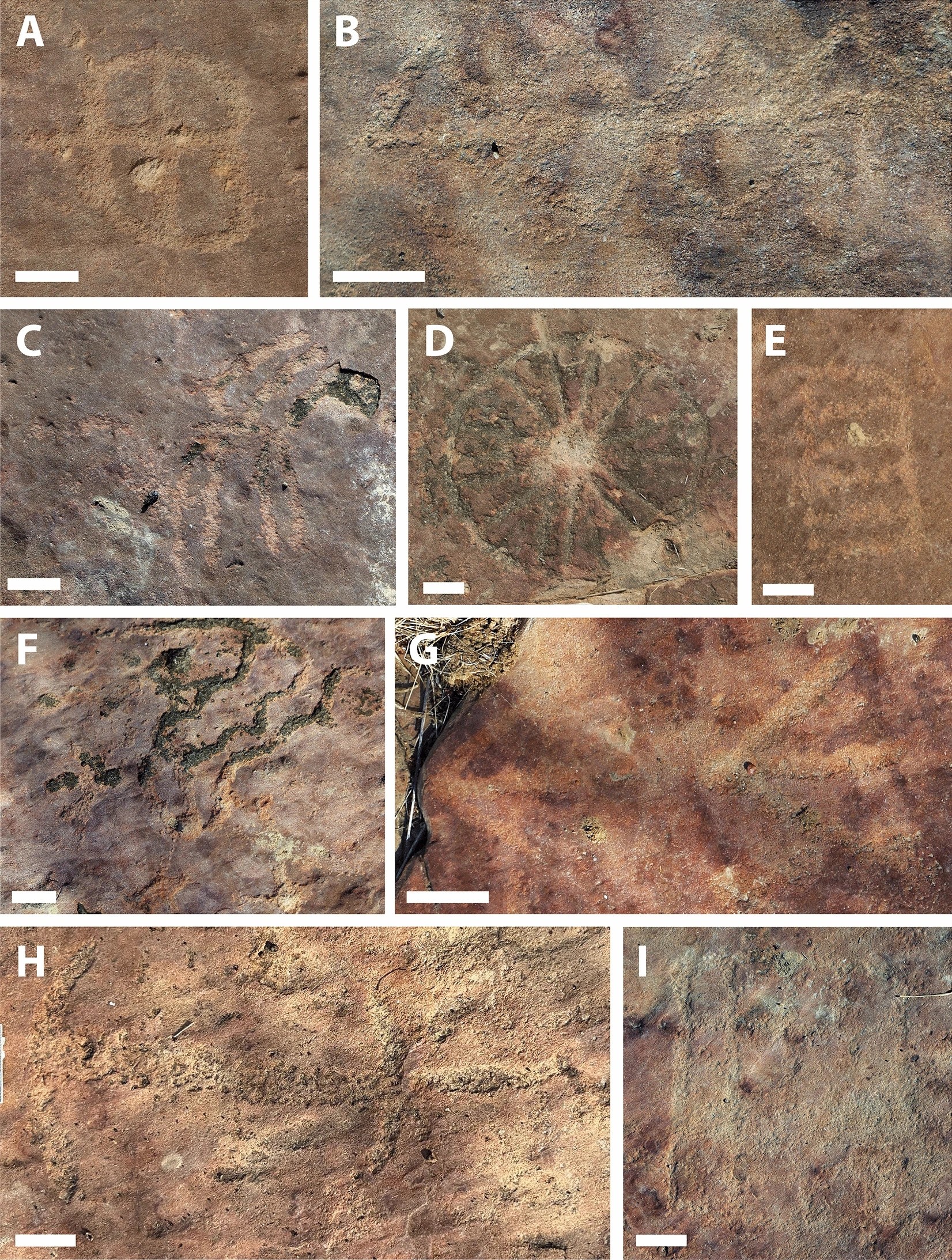Palaeontology and archaeology have aligned in northeast Brazil, as a “remarkable” site featuring dinosaur footprints alongside ancient rock carvings has been uncovered.
The Serrote do Letreiro Site, in the Sousa municipality, Paraíba State, is home to three main rock outcrops, where the fossilized footprints of theropod, sauropod, and iguanodontian dinosaurs from the Early Cretaceous (145 to 100.5 million years ago) have been discovered. Not only that, but the area is also home to petroglyphs – a type of rock art made by directly pecking at the rock’s surface – created by humans in the pre-colonial period.
In a new study, researchers describe this “invaluable” intercept of palaeontological and archaeological elements, the likes of which have never been seen in such close proximity.
Dinosaur tracks and rock art have been found in association before – in Australia, Poland, and Utah, for example – but “in none of these instances do the petroglyphs display such a close-knit relationship with the footprints as in Serrote do Letreiro,” the researchers write in their study.
“It is unquestionable that the engravers acknowledged the footprints and intentionally executed the petroglyphs around them, establishing a symbolic connection between human graphic expression and the fossil record.”

Petroglyphs and dinosaur tracks at Outcrop 1. Theropod footprints are in white and engravings are in orange.
The first mentions of dinosaur footprints from the region date back to the early 20th century and palaeontological aspects of the site have been studied several times in the years since. The petroglyphs, however, have received much less attention, having never been comprehensively analyzed or considered in combination with the footprints.
To rectify this, the team surveyed the site, identifying three large outcrops where both dinosaur footprints and petroglyphs were observed. At the first outcrop, an additional 22 symbols were discovered, along with the highest concentration of theropod – the clade to which T. rex belongs – tracks.

Theropod footprints (A-F) in close association with petroglyphs (D and F).
The second contained just two petroglyphs, although there appears to have once been a much higher number that have since become illegible. At the third and final outcrop, 30 carvings were identified, as well as extensive pecking marks and tracks left largely by sauropod dinosaurs.
The petroglyphs, the researchers discovered, are mostly circular featuring radial lines and other motifs. While their meaning is not obvious, they can be interpreted as geometric forms, and bear a striking resemblance to rock carvings found elsewhere in Paraíba and Rio Grande do Norte. Some notable designs stand out, including rectangular grid engravings and others resembling stars and serpents.

Petroglyphs from Outcrop 3.
The variation in style suggests multiple individuals were behind the rock art. We may not know who they were, but we do know that they took great care when carving alongside the dinosaur footprints.
“In none of the cases was it found that the creation of a petroglyph resulted in damage to the existing footprints, suggesting thoughtfulness by the makers,” the team explain.
Serrote do Letreiro’s “outstanding juxtaposition” of palaeontology and archaeology, according to the researchers, indicates that humans in pre-colonial Brazil engaged with the fossil record, actively incorporating it into their graphical expression and using it help to establish their cultural identity.
As such, the study authors argue for its conservation, demanding “immediate mitigation measures to prevent further damage”, so that we can continue to appreciate this unique site for years to come.
The study is published in Scientific Reports.
Source Link: “Remarkable” Rock Art Found Alongside 145-Million-Year-Old Dinosaur Footprints In Brazil